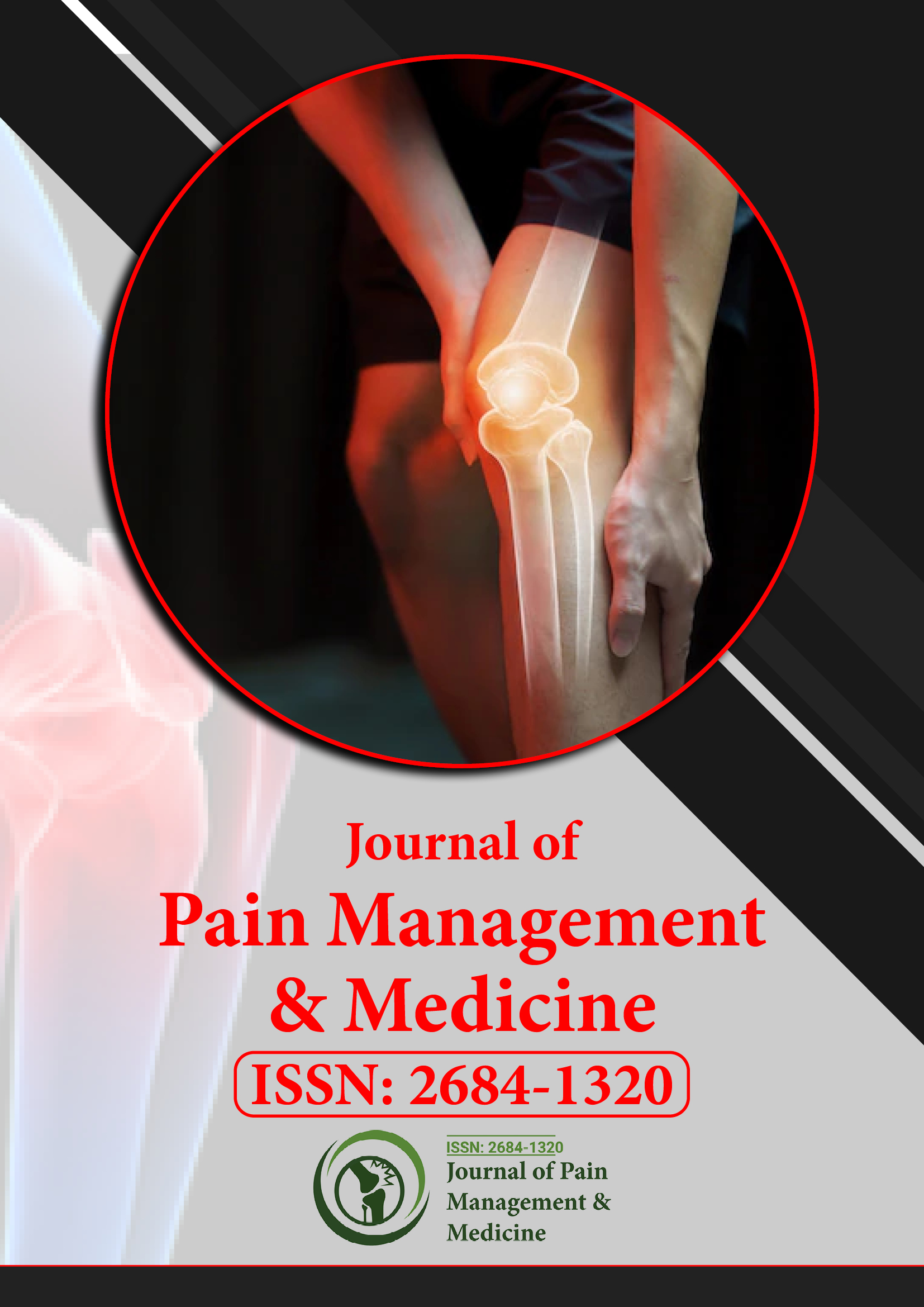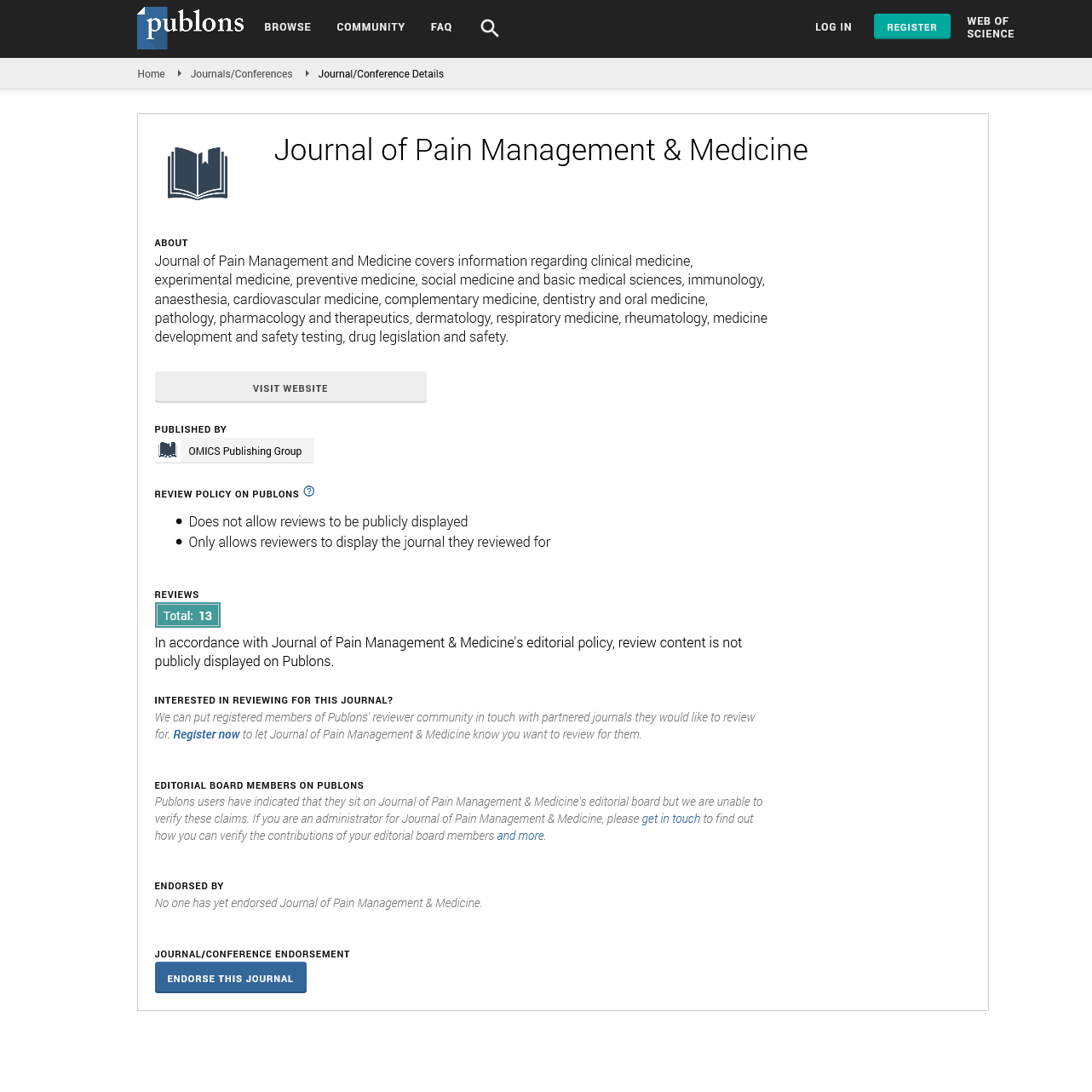Indexed In
- RefSeek
- Hamdard University
- EBSCO A-Z
- Publons
- Euro Pub
- Google Scholar
- Quality Open Access Market
Useful Links
Share This Page
Journal Flyer

Open Access Journals
- Agri and Aquaculture
- Biochemistry
- Bioinformatics & Systems Biology
- Business & Management
- Chemistry
- Clinical Sciences
- Engineering
- Food & Nutrition
- General Science
- Genetics & Molecular Biology
- Immunology & Microbiology
- Medical Sciences
- Neuroscience & Psychology
- Nursing & Health Care
- Pharmaceutical Sciences
Opinion Article - (2024) Volume 10, Issue 5
Managing Pain Effectively: A Multidisciplinary Approach to Acute and Chronic Pain
Olesen Louise*Received: 26-Aug-2024, Manuscript No. JPMME-24-27454; Editor assigned: 28-Aug-2024, Pre QC No. JPMME-24-27454 (PQ); Reviewed: 11-Sep-2024, QC No. JPMME-24-27454; Revised: 18-Sep-2024, Manuscript No. JPMME-24-27454 (R); Published: 25-Sep-2024, DOI: 10.35248/2684-1320.24.10.288
Description
Pain is a human experience and its management is an essential aspect of healthcare. Pain can arise from injury, illness, surgery or chronic medical conditions and can significantly affect an individual’s quality of life. Pain management involves the use of various medical, psychological and therapeutic interventions to reduce discomfort and improve function. It is a painful sensory and emotional experience that is frequently associated with physical or potential tissue injury.
Classification of pain
Pain is generally classed into two types: Acute pain and chronic pain. Acute pain is a sudden and usually caused by an injury, surgery or the medical condition. It tends to have a clear cause, such as a broken bone, burn or cut and resolves as the underlying injury heals. While acute pain serves a protective function by alerting the body to harm, it can also cause distress and limit daily functioning. Effective management of acute pain, particularly after surgery or trauma, it is essential to prevent complications such as prolonged recovery, impaired mobility and the transition to chronic pain.
Chronic pain remains for more than three to six months and may continue even after the initial injury or illness has resolved. Conditions such as arthritis, fibromyalgia, neuropathy and cancer may result in chronic pain, which can be challenging to manage. It is a continued existence can have physical, emotional and psychological effects, such as depression, anxiety and disability.
Multidisciplinary approach to pain management
Pain management is a multifaceted process that requires a combination of treatments to address the physical, emotional and psychological aspects of pain. The multidisciplinary method to pain management typically involves association between physicians, physical therapists, psychologists and other healthcare professionals to design a personalized treatment plan.
Important aspects of this method include pharmacological interventions, non-pharmacological therapies, interventional procedures and complementary therapies.
Pharmacological methods to pain management: Medications are one of the most common methods used to treat pain. They can be categorized based on their mechanisms of action and the types of pain they target.
Non-Steroidal Anti-Inflammatory Drugs (NSAIDs): These medications, such as ibuprofen, aspirin and naproxen, are commonly used for mild to moderate pain caused by inflammation. NSAIDs work by inhibiting the development of prostaglandins, which are responsible for pain and inflammation. They are frequently used to manage conditions such as arthritis, muscle strains and post-surgical pain.
Acetaminophen (paracetamol): It is another drug that can be used for mild to moderate pain. Similar to NSAIDs, acetaminophen does not reduce inflammation but it is effective in managing headaches, toothaches and fever.
Opioid analgesics: Opioids, such as morphine, oxycodone and hydrocodone, are powerful pain relievers typically reserved for moderate to severe pain, particularly when other treatments are insufficient. These medications work by binding to opioid receptors in the brain and spinal cord, altering the perception of pain. While opioids can be highly effective for acute pain, such as after surgery or injury, their use is closely monitored due to the risk of addiction, tolerance and overdose. For chronic pain, opioids are generally prescribed carefully and are frequently combined with other treatments.
Adjuvant analgesics: Certain medications that are not traditionally classified as pain relievers can be used to manage specific types of pain. These include:
Antidepressants: Tricyclic antidepressants (e.g., amitriptyline) and Serotonin-Norepinephrine Reuptake Inhibitors (SNRIs) (e.g., duloxetine) are frequently used to manage neuropathic pain and chronic pain conditions such as fibromyalgia. They alter neurotransmitter levels in the brain, which helps to reduce pain perception.
Anticonvulsants: Medications such as gabapentin and pregabalin are used to treat nerve-related pain, such as postherpetic neuralgia and diabetic neuropathy. These drugs stabilize electrical activity in the nervous system, thereby reducing pain signals.
Muscle relaxants: For patients with muscle spasms or musculoskeletal pain, muscle relaxants such as baclofen or cyclobenzaprine may be used to reduce muscle tension and discomfort.
Citation: Louise O (2024). Managing Pain Effectively: A Multidisciplinary Approach to Acute and Chronic Pain. J Pain Manage Med.10:288.
Copyright: © 2024 Louise O. This is an open access article distributed under the terms of the Creative Commons Attribution License, which permits unrestricted use, distribution and reproduction in any medium, provided the original author and source are credited.

